TacTic TACJ2005 Handleiding
Bekijk gratis de handleiding van TacTic TACJ2005 (4 pagina’s), behorend tot de categorie Radiografisch bestuurbaar speelgoed. Deze gids werd als nuttig beoordeeld door 66 mensen en kreeg gemiddeld 4.8 sterren uit 33.5 reviews. Heb je een vraag over TacTic TACJ2005 of wil je andere gebruikers van dit product iets vragen? Stel een vraag
Pagina 1/4

The AnyLink2 SLT 2.4GHz
Radio Adapter can greatly
expand a transmitter’s
versatility, allowing it to be
used with a huge variety
of fl ight models, including
Tx-R
™
Transmitter-Ready
™
aircraft (including Select Scale and Micro Tx-R models). AnyLink2 is
capable of full range, to control any size aircraft.
Read this manual in its entirety before use! Damage resulting
from misuse or modifi cation will void your warranty.
ITEMS INCLUDED
(1) AnyLink2 2.4GHz Radio Adapter with 1S LiPo Battery
(1) Cable A – JR®, Spektrum®, Graupner®
(1) Cable B – Futaba® Square
(1) Cable C – Spektrum, Hitec®
(1) TC10 USB Charger
(2) Hard Locking Adhesive Strips
(1) Instruction sheet
COMPATIBLE TRANSMITTERS
AND RECEIVERS
AnyLink2 can link virtually any brand transmitter (Tx) to any Tactic brand
2.4GHz receiver (Rx) such as the TR624 or TR625. Transmitters must be
equipped with a functioning trainer jack, and can originally be designed
for use on 72MHz, 2.4GHz, FM, PCM, etc. Go to www.tacticrc.com for a
comprehensive Tx compatibility chart. AnyLink2 is not compatible with
non-Tactic brand receivers not having SLT technology.
TX CABLE
See the chart below to determine the cable needed to connect AnyLink2 to
the Tx. Three cables are included, for many Futaba, Hitec, JR, Spektrum,
and Graupner brand radios.
This chart is current as of the date of the printing of this manual. Check
www.tacticrc.com for the most updated compatibility chart. Transmitters
not listed may or may not be compatible with AnyLink2. See your local
hobby retailer for optional cables for other radio types:
TACM0013 AnyLink2 Cable Futaba/Hitec Round
TACM0014 AnyLink2 Cable Airtronics SD-Series
TACM0015 AnyLink2 Cable Airtronics 5-Pin Round
IMPORTANT: For some transmitters, connecting a cable to the
trainer jack will automatically cause the Tx logic circuitry to turn
on. When not in use, make sure to disconnect the cable from trainer jack
to prevent the Tx battery from discharging completely.
ANYLINK2
TM
AnyLink2 Transmitter Compatibility Chart
ANYLINK2
MODE
BRAND MODEL CABLE
Futaba®
4YF (72M, 2.4G), 4YBF, 6EX, TJ, 7C, 8FG, 8J, 9C, 10C, 14SG; (12FG, 12Z, 14MZ, 18MZ
> )See note page 2 *
4VF, 5U, 6A, 6DA, 6H, 6X, 6YF, 6YG, 7U, 7NFK, 8U, 9Z
Hitec ®
Optic 5, Optic 6 Sport, and Eclipse 7 (all on 2.4GHz), Aurora 9
Neon, Flash 4sx, Flash 5, Flash 5sx, Focus 4, Focus 6, Laser 4, Laser 6, Optic 5 (72M),
Optic 6 (72M, 2.4G), Eclipse 7 (72M), Prism 7, Prism 7X
Tower Hobbies
®
4FM, 6FM
4TH, 6XM
Graupner ®
MX-12, MX-16
Walkera ®
Devo 7, Devo 8S
Airtronics ®
SD-5G, SD-6G, SD-10G
Vanguard 4FM, 6FM, RD6000 Sport, RD6000 Super, RDS8000, Radiant 6FM
Spektrum
®
DX4e, DX5e, DX6, DX7, DX7s, DX8, DX9, DX10T, DX18
DX6i
JR ®
All with trainer/DSC jack
B
(Included)
B
(Included)
A
(Included)
A
(Included)
A
(Included)
C
(Included)
C
(Included)
C
(Included)
D
(TACM0013)
D
(TACM0013)
D
(TACM0013)
E
(TACM0014)
F
(TACM0015)
F
F
J
S
J
S
A
H
F
F
H
A
A
1

BATTERY AND CHARGER
AnyLink2 is powered by an included 1S 3.7V 450mAh lithium-polymer
battery (LiPo).
IMPORTANT:
It will be necessary to fully charge the battery with
the included USB charger before use! Follow all safety precautions
below before proceeding. Failure to do so may cause AnyLink2 to lose
power prematurely, resulting in a loss of control signal and causing the
model to crash.
●
NEVER LEAVE BATTERY UNATTENDED WHILE CHARGING
● Never allow the battery temperature to exceed 140°F (60°F)
● Never place battery on combustible materials while charging
● Never attempt to disassemble or modify the battery
● Never attempt to charge or continue to use the battery if it’s swollen,
punctured, or deformed in any way.
● Never attempt to charge the battery with an incompatible battery
charger. Only use the included charger.
● Follow appropriate disposal instructions when the battery has reached
the end of its useful life
1.
Open the battery door on the rear side of AnyLink2 and remove the battery.
2. Connect the included TC10 USB charger to a personal computer’s USB
port, and turn the computer on.
3. Connect the LiPo battery to the jack on the opposite end of the charger.
4. The charger’s red LED will turn on to confi rm charge is being delivered.
5.
When the charger automatically detects full charge is achieved, the red
LED will fl ash slowly. The battery can be removed at this time and is ready
for use. Note: Rapid fl ashing of the LED indicates an error occurred.
The battery should be disconnected from the charger and placed in a
fi reproof location. Contact Hobby Services
.
6. If the battery was successfully charged, attach it to the connector inside
AnyLink2. Carefully insert the battery inside AnyLink2 and close the
door, making sure not to pinch the wires in the door.
AnyLink2 turns on automatically when connected to a host transmitter
and a signal is present at the trainer jack. Otherwise, AnyLink2’s power
will remain off.
Tones will sound from AnyLink2 if its battery voltage drops to an unsafe
level (3.25V). Land the aircraft immediately to avoid loss of control
and possible destruction of the model. Fully re-charge the battery before
further use.
ANYLINK2 MODE SETUP
IMPORTANT!
Remove the airplane’s propeller prior to setting up
AnyLink2 to work with the fl ight system. Failure to do so could result
in personal injury if the motor turns unexpectedly. Make sure all
batteries are fully charged prior to operation. Make sure all connections are
solid physically and cannot easily become dislodged at any time. AnyLink2
must be used with a Tx having a throttle stick that does NOT automatically
spring back to center.
1. Create a new model memory in the host transmitter before starting to
confi gure AnyLink2.
2. Mount AnyLink2 to the host Tx, by either clipping the mounting grip
onto the handle of the host Tx, or using the two hard locking mounting
strips included. Extend AnyLink2’s antenna upwards from the top of the
Tx as much as possible.
3. Remove the Rf module or crystal from the host Tx if possible, or disable
its Rf function.
4. Leave the transmitter’s own antenna in a retracted or folded position.
5.
For computer radios make sure the modulation is set to PPM mode. For
transmitters having the option to transmit a signal when Tx power is
turned ON, make sure “YES” is selected. Futaba 12FG, 12Z, 14MZ, and *
18MZ transmitters must be mapped for Futaba channel order before use.
6. Move the throttle stick to minimum; leave all other sticks at center.
7.
Connect the appropriate cable to the Tx trainer jack. If the transmitter’s
logic turns on automatically do NOT turn the Tx’s power switch on as it
could cause AnyLink2 to not function. Otherwise, if the transmitter’s logic
circuitry does NOT turn on automatically, turn the Tx power switch ON.
8. AnyLink2 should beep when a signal is received from the Tx and a red
LED should illuminate at this time. Identify the letter printed next to the
illuminated LED from the following list:
F Futaba
J JR (also works for Graupner)
S Spektrum
H Hitec
A Airtronics (also works for Walkera)
C Custom
If the LED illuminates next to the proper letter for the connected radio,
skip to the next section.
If the proper LED is not illuminated, insert a small screwdriver into the hole
next to “MODE” and press the button repeatedly until the LED illuminates
next to the proper Tx brand letter. The LED will fl ash. Disconnect the cable
from AnyLink2, and re-connect. The LED should now stay on constantly
next to this selected radio setting. AnyLink2 should now be confi gured for
the Tx and will retain this setting even after power is removed. Resetting
AnyLink2’s radio setting will only be necessary when a different brand Tx
will be connected.
CUSTOM MODE SETUP
If using a radio brand not listed above, AnyLink2 can be custom confi gured
for your radio.
1. Create a new model memory in the host transmitter before starting to
confi gure AnyLink2.
2. Move the Tx throttle stick and throttle trim to minimum position. Leave
all other sticks and trims at center position.
3. Connect the proper cable to the host transmitter’s trainer jack. If the
transmitter’s logic doesn’t turn on automatically, turn the Tx power
switch ON.
4. Connect the cable to AnyLink2, which should power up automatically if
a trainer signal is present.
5. Press AnyLink2’s MODE button and hold until the LED next to “C”
begins to fl ash.
6. Move the throttle trim to center position, then move the throttle stick
to center position. A tone should sound to indicate the throttle channel
is at center.
7. Determine which stick will be used for aileron control. Move that stick to
the far-right position, then to the far-left position, then return to center.
8. Determine which stick will be used for elevator control. Move that stick
to the far-up position, then to the far-down position, then return to
center.
9. Determine which stick will be used for throttle control. Move that stick
to the far-up position, then far-down position, then return to center.
10 . Determine which stick will be used for rudder control. Move that stick
to the far-right position, then far-left position, then return to center.
11 .
Move the throttle stick to minimum position, which should be followed by
a beep and the LED should illuminate next to “C” to indicate Custom mode
is set. AnyLink2 will save this custom data and exit this setting mode.
12 . Remove power from AnyLink2, and then re-apply. AnyLink2 should be
confi gured to work with this Tx. Once power is removed from AnyLink2
it will not be necessary to reset Custom mode.
LINKING TO A TACTIC RX
2

LINKING TO A TACTIC RX
To use AnyLink2 with a Micro Tx-R airplane skip to the next section.
Otherwise, to link to a Tactic brand Rx or Select Scale Tx-R aircraft, refer
to the instructions included with the receiver, or go to www.tacticrc.com/
receivers/index.html to fi nd an instruction sheet as needed.
Remember to set the failsafe on the Tactic receiver.
NOTE: Tactic receiver TR1424 does not include a failsafe function. Tactic
receiver TR424 includes a non-adjustable failsafe where the throttle
position is automatically established based on the maximum or minimum
position of the throttle stick (CH3) each time the TR424 is linked to a Tx.
All other channels will hold their last position.
For all other Tactic receivers, the factory default is that CH3 defl ects to
0% (minimum) which should stop motor function if the Rx loses signal,
and all other channels will hold their last position. The throttle defl ection
position can be changed manually if desired. IMPORTANT! Confi rm the Tx
servo reversing settings are in the correct position for the application. To
manually set the throttle failsafe:
A. Make sure the model’s ESC is NOT armed. If using a combustion engine
make sure it’s NOT running.
B. Move the Tx throttle stick to the desired failsafe position.
C. Press and hold the Rx “LINK” button until the Rx LED blinks twice.
D. Release the LINK button. The Rx LED should stay illuminated to indicate
the Rx is now linked, with the throttle failsafe in the new position as set
above.
E. Skip to the SYSTEM CHECK AND OPERATION section.
AUTO-LINKING ANYLINK2 TO
MICRO TX-R AIRCRAFT
When power is originally applied to a Micro Tx-R aircraft the built-in Rx
will automatically search for the strongest signal being emitted from
any Tactic 2.4GHz Tx (including TTX402, 403, AnyLink2, etc.), or other
brand Tx which is currently emitting the SLT protocol, and link to that
signal. There are no link buttons to press to establish this link. A link is
established when the red LED on the board illuminates.
Later, if power is re-applied to the same Micro Tx-R aircraft while multiple
Tactic transmitters are operating simultaneously – including the original
transmitter “A” – the Micro Tx-R aircraft will attempt to re-link with
transmitter “A”. However, if power is re-applied to the Micro Tx-R aircraft
while a signal is being emitted from a different Tactic transmitter, the
Micro Tx-R aircraft will now automatically link to the new transmitter (Tx
“B”). To re-establish the link with Tx “A”, repeat this process but apply
power only to Tx “A” before applying power to the Micro Tx-R aircraft.
Try these tips if the Micro Tx-R aircraft has diffi culty linking with AnyLink2
when multiple Tactic signals are present:
1. Pre-link your AnyLink2 and Micro Tx-R aircraft before arriving at the
fl ying site.
2.
Turn on the Tx/AnyLink2 before applying power to the Micro Tx-R aircraft.
3. Wait for other pilots fl ying Tactic to remove power from their Tx/
AnyLink2 before attempting to link.
4. Move further away from other Tactic transmitters before powering your
equipment.
SYSTEM CHECK AND OPERATION
Check the general operation of the system and all fl ight equipment before
attempting a fl ight.
WARNING! With the aircraft on the ground, make sure the throttle
stick remains at the minimum position and is not accidentally
moved. NOTE: Micro Tx-R aircraft have a throttle arming procedure
which does require movement of the throttle channel during setup (see
instructions included with the Micro Tx-R aircraft).
Range Check: Determine the safe operating distance from the Tx to the Rx.
Place the aircraft on the ground and walk 100 feet (30m) away from the
model. Confi rm that smooth, interference-free control of all surfaces exists.
Failsafe Check: If using the failsafe feature, test for proper operation:
1. Prepare a way to quickly disconnect the battery/ESC connection if
power needs to be cut immediately.
2. Have an assistant hold the aircraft in place on a test stand, with hands
away from the motor.
3. Apply power to the system and test the motor and fl ight gear for general
operation.
4. Remove power from the Tx/AnyLink2.
5. Observe the model’s surfaces to ensure they move to the previously set
failsafe positions.
6. If failsafe operation is correct, re-connect power to the system as
explained earlier and prepare for fl ight. If the failsafe function does not
operate correctly, re-check the LINKING TO A TACTIC Rx and SYSTEM
CHECK AND OPERATION sections and re-try.
7. After the fl ight is complete, remove power from the fl ight system as
soon as possible, then the transmitter and AnyLink2.
INACTIVITY ALARM AND
REMOVING POWER
If no Tx controls are moved for 5 minutes, AnyLink2 will fl ash all LEDs
simultaneously and tones will sound to alert that power is still ON and
AnyLink2 is still transmitting a signal. After power has safely been removed
from the model, power must be removed from AnyLink2 by disconnecting it
from the transmitter’s trainer jack or turning off power to the Tx (depending
on Tx type).
SPECIFICATIONS
Compatible Rxs: Tactic 2.4GHz, Tx-R aircraft, Rxs having SLT protocol
Frequencies: 2.403 – 2.479GHz
Modulation: FHSS spread spectrum
Flight range: full range
Input power: 3.30 – 4.20V, 150mA
Power control: automatic with incoming signal recognition
Power on indicator: red LEDs with audible tones
Low voltage alarm: audible tones at 3.25V
Inactivity alarm: tones sound after 5 minutes of Tx inactivity
Output power: < 0.1W
Case dimensions: 2.68 x 1.46 x 0.98" (68 x 37 x 25mm)
Weight: 1.62 oz. (46g)
TACTIC ACCESSORIES
See your local hobby retailer for any of these optional parts:
TACL0624 TR624 2.4GHZ 6CH Receiver
TACL0625 TR625 2.4GHZ 6CH Twin Antenna Receiver
TACP0010 AnyLink2 TC10 USB 1S LiPo Charger
TACP0011 AnyLink2 1S 3.7V 450mAh 25C LiPo Battery
IMPORTANT WARNING AND
PRECAUTIONS
● Do not allow water or moisture inside AnyLink2.
● Do not operate R/C model aircraft near power lines, radio or cell
phone towers, roads or automobiles, buildings, or pedestrians.
● Do not operate R/C equipment if you are physically impaired as it could
pose a safety hazard to yourself or others in the area.
● Do not allow small children to operate/control model R/C equipment
without the supervision of an adult.
● Do not allow the transmitter’s throttle stick to accidentally be moved
away from the “off” or minimum position while the model’s engine/
motor is running.
● Do not allow chemicals to come in contact with any parts of AnyLink2.
Substances such as glow fuel, gasoline, CA glue, etc. could permanently
damage the case and electronic components.
● Always follow the Academy of Model Aeronautics National Model
Aircraft Safety Code when operating an R/C aircraft.
3
Product specificaties
| Merk: | TacTic |
| Categorie: | Radiografisch bestuurbaar speelgoed |
| Model: | TACJ2005 |
| Kleur van het product: | Zwart |
| Gewicht: | 46 g |
| Breedte: | 37 mm |
| Diepte: | 25 mm |
| Hoogte: | 68 mm |
| Soort: | Radio-Controlled (RC) Model Parts |
| Capaciteit van de accu/batterij: | 450 mAh |
| Accu/Batterij voltage: | 3.7 V |
| Merkcompatibiliteit: | Alle merken |
| Aantal: | 1 |
| Aantal kanalen: | 6 kanalen |
| Batterijtechnologie: | Lithium-Polymeer (LiPo) |
| RF-zendfrequentie: | 2400 MHz |
Heb je hulp nodig?
Als je hulp nodig hebt met TacTic TACJ2005 stel dan hieronder een vraag en andere gebruikers zullen je antwoorden
Handleiding Radiografisch bestuurbaar speelgoed TacTic

28 Maart 2023

2 Maart 2023

14 Februari 2023

16 Januari 2023

6 Oktober 2022
Handleiding Radiografisch bestuurbaar speelgoed
- Spin Master
- PowerBox Systems
- ACME
- LRP
- Pichler
- Biltema
- Blade
- Graupner
- FrSky
- SkyRC
- DF-Models
- SAB
- Revell
- Little Tikes
- ScaleArt
Nieuwste handleidingen voor Radiografisch bestuurbaar speelgoed
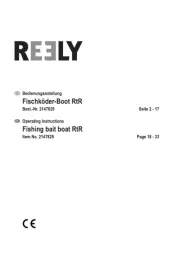
1 September 2025
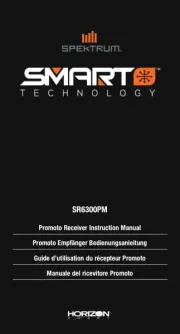
1 September 2025
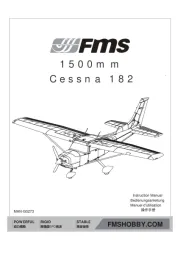
12 Augustus 2025
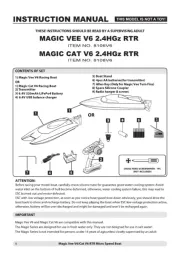
28 Juli 2025
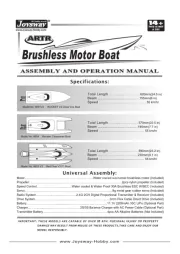
28 Juli 2025
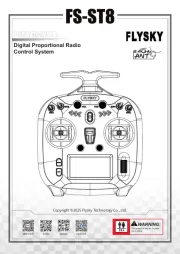
28 Juli 2025

9 Juli 2025

8 Juli 2025

8 Juli 2025
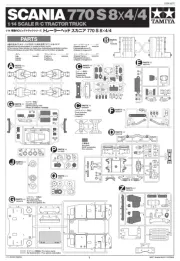
7 Juli 2025